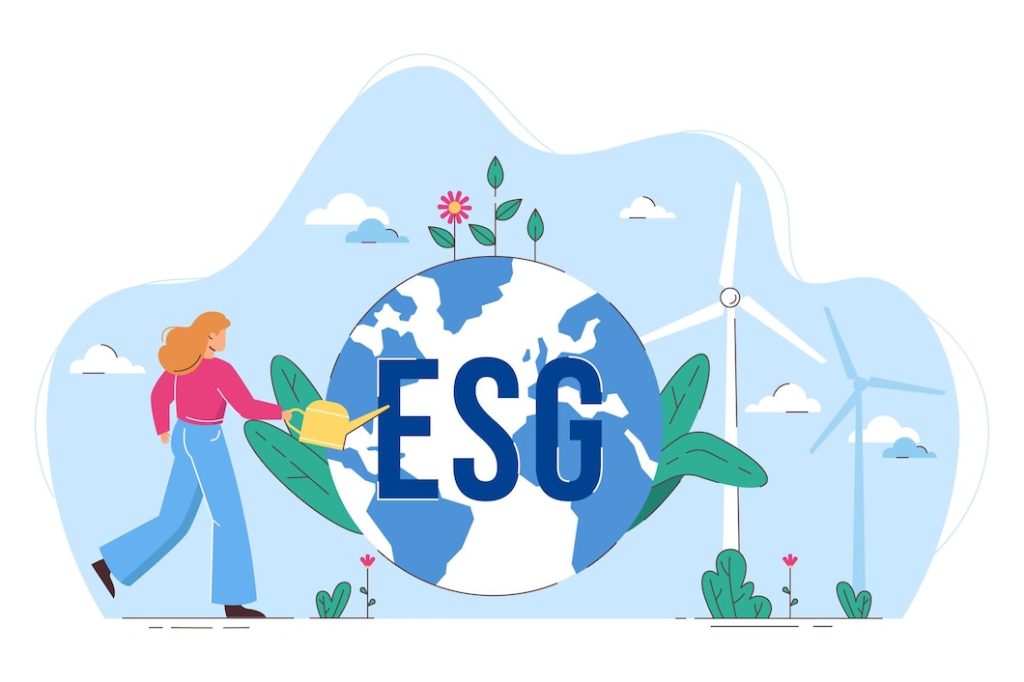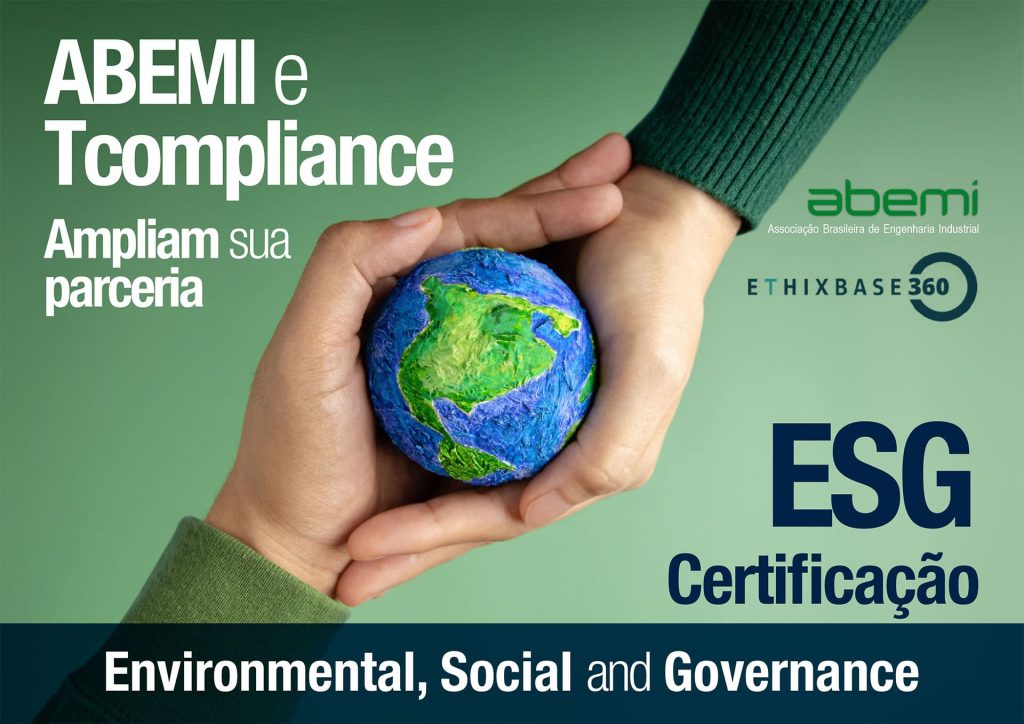ESG, the challenge of a sustainable economy
The term Environmental, Social and Governance (ESG – acronym in English) or Environmental, Social and Governance (ASG – in Portuguese) has become a way of defining whether a company's operations are socially responsible, sustainable and correctly managed. This is because the concept is used to describe how much a business seeks ways to minimize its impacts on the environment, cares about people and adopts good administrative practices.

With this definition, it is observed that there is more and more involvement of companies around the theme, which is no longer a social project, to become a challenge in the issue of sustainable development.
Given the importance of the topic, ABEMI's board adopted it as one of the pillars of its management. And for that, it created a specific ESG committee, which aims to disseminate principles and benefits ranging from reputation and increased company value in the market to the creation of opportunities for developing new businesses and the ability to attract and retain talent. In addition to promoting reflection on the three pillars of sustainability“: economic, environmental and social.
For ABEMI, the adoption of ESG parameters by its associates becomes imperative since in the future, companies that do not correctly manage their impacts will not be part of society, nor will they be in the choices of customers and investors.
ESG is a one-way street. The challenges are many, but those that incorporate the ESG parameters will add value to the business and society as a whole.
Remote origin of the term
The ESG has its remote origin in the definition of sustainable development, introduced in 1987 in the report “Our Common Future”, of the World Commission on Environment and Development of the UN, chaired by the Prime Minister of Norway Gro Harlem Brundtland.
The concept was popularized in 1994 by the British sociologist John Elkington, who created the term “Triple Bottom Line”, also known as “Tripod of Sustainability”.
Based on this concept, the need to include environmental and social variables in the economic perspective of business was reinforced.
Close origin of the term
The term ESG was first coined in the report Who Cares Wins, Connecting Financial Markets to a Changing World, a joint initiative developed by the UN Global Compact and several financial institutions (2005).
In this report, UN Secretary-General Kofi Annan wrote to 50 directors and CEOs of the world's leading financial institutions, inviting them to integrate ESG principles into the financial market
Recent events that leveraged the ESG agenda
The years 2019 to 2021 were permeated with events that contributed to the enhancement of the ESG agenda in Brazil and in the world and to its expansion from the financial market to the corporate market.
In 2019, the release of important reports and surveys, such as McKinsey and the International Monetary Fund - Global Financial Stability Report -, which attested to the good performance of financial assets linked to the ESG theme, turned on the lights for the theme.
In the same year, we had very relevant social movements, which focused on the need for greater care with diversity, greater political participation and the search for the reduction of social inequalities. Ex. of movements: Black Lives Matters (USA), increase in subway fares (Chile), changes in the living conditions of the population (Argentina), electoral fraud (Bolivia), extradition law (Hong Kong) and the implementation of tariffs on WhatsApp ( Lebanon), among others.
In 2020, the highlight was the letter from Larry Fink, CEO of BlackRock, one of the largest financial asset managers in the world, addressed to its clients. The message was given: CLIMATE RISK IS INVESTMENT RISK.
Also in 2020, one cannot fail to mention the COVID-19 pandemic, which further exposed social inequalities and the impacts of climate change on people and the planet.
Recent events that leveraged the ESG agenda
In 2021, the ESG focus became even more consistent due to the release of the 16th report “The Global Risks Report” by the World Economic Forum.
This report highlights the main risks that could reshape our world in 2021 and in the next decade. It is based on a survey of nearly 700 experts and decision makers around the world, who were asked about their concerns for the next decade, how global risks interact and where opportunities exist to act collectively to mitigate these threats.
Finally, still in 2021, one could not fail to mention the 6th report of the Intergovernmental Panel on Climate Change – IPCC, which summarizes knowledge about the physical bases of climate-related sciences, and which concluded to be a major catalyst for the ESG theme. unequivocal that human influence has warmed the atmosphere, oceans and land surface, and that significant impacts will be felt on the planet in the coming years, as well as the results achieved within the framework of the United Nations Conference on Climate Change 2021 (COP26).

The adoption of ESG parameters demonstrates that the company has a PURPOSE in its business and a long-term VISION.
The incorporation of the Environmental, Social and Governance pillars in corporate decisions translates the
commitment to TRANSPARENCY and the use of
FERRAMENTAS e MÉTRICAS que auxiliam no mapeamento e na mitigação dos riscos respectivos, e que demonstram o seu alinhamento com as melhores práticas.
One of the main aspects related to ESG parameters is the definition of the MATERIALITY MATRIX.
This is the process of identifying and mapping the
most important themes for the company in each of the pillars (ESG), based on the business strategy and also on the stakeholders' perception of its impacts.
Here, it is important to bear in mind the concept of “dual materiality”, created by the European Commission, which considers material issues not only
from the perspective of investors, but also from the lens of society and the environment.
Below we will present some of the main material topics that are considered under the rubric of each of the ESG parameters.

Good practices related to the parameter AND they concern the mitigation of the impacts of companies and industry on the environment, their performance and compliance with the legal requirements applicable to environmental protection and their contribution to the decarbonization of the economy. Material topics from this perspective, among others:
- Adoption of eco-efficiency programs
- Management of greenhouse gas emissions
- Management of solid waste and water resources
- Induction of good environmental practices along the value chain and other stakeholders
- Products and services focused on the environmental market
- Environmental compliance
- Water and energy efficiency

Good practices related to the parameter S reflect the relationship of companies with their employees, with their suppliers, with their customers and with the communities affected by
its activities, especially, and in general terms, respect for human rights, health and safety, compliance with labor legislation and the adoption of diversity, inclusion and anti-discrimination programs. Material topics from this perspective, among others:
- Talent attraction and retention
- Developing people
- Improvement in the quality of life of employees, partners and the community in which it operates
- Induction of good social practices along the value chain and other stakeholders
- Promotion of private social investment
- Incentive to volunteer
- Labor compliance
- Gender Equality/Diversity

Good practices related to the parameter G concern the way in which leadership is exercised by directors, boards and company managers.
These are practices related to knowledge of environmental and social risks, the transparency of their disclosure to the market and the commitment of management at all levels with their mitigation. ESG governance reveals the company's vision and values, its commitment to integrity and ethics, and its path in seeking to generate positive impacts for all stakeholders. Material topics from this perspective, among others:
- Promotion, induction and guarantee of adoption of good transparency, accountability and corporate governance practices
- Ensuring efficient risk management
- Promoting the adoption of codes of conduct
- Adoption of best practices for protecting shareholder rights
- Commitment to creating value for shareholders
- Diversity on the Board
- Transparência Fiscal
- ESG goals for admins and managers
What does the year 2022 have in store for us?
We started 2022 still under the strong interference of the COVID-19 pandemic, and with confirmation, by the recently released “The Global Risks Report – 2022” (World Economic Forum), of the severity of environmental and climate risks on a global scale for corporations over the next 10 years.
The financial market and regulatory bodies, in turn, have been playing their part, such as the inclusion by the Brazilian Securities Commission (CVM) of the requirement for ESG information in the reference form of companies listed on the stock exchange.
This scenario certainly reinforces the urgency of advancing with more focus and efficiency in the implementation of the ESG agenda.
ABEMI member companies cannot be left out of this agenda.
In addition to incorporating ESG parameters into their businesses and projects,
which is highly recommended, in order to adapt to the demands of the market and the government, which, as mentioned, have been encouraging the adoption of these criteria, can actively contribute so that their customers also do so, generating added value to their products and services, and also opportunities in their projects.
The challenges are numerous, and will be faced as the ESG process moves forward with this purpose.
It is, therefore, a path of no return, in which sustainability and the purpose of acting beyond the interests of the company itself, for the benefit of employees, investors, partners and suppliers, the community and the planet, adds value to business and society as a whole.


